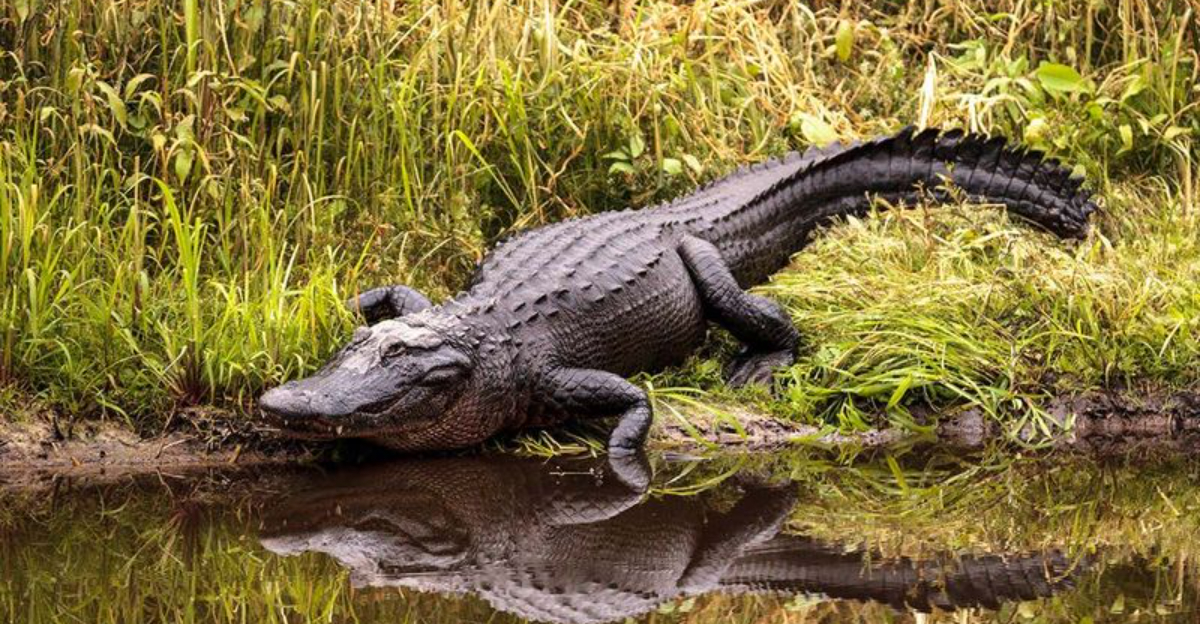Beneath the murky waters of Georgia lies one of nature’s most captivating predators—the American alligator.
With their prehistoric appearance, these majestic reptiles have roamed the state’s wetlands for centuries, sparking both awe and respect from locals.
From the expansive Okefenokee Swamp to the many rivers and lakes dotting Georgia’s southern landscape, alligators are not just survivors—they are vital players in the state’s rich ecosystem.
1. Kings of the Okefenokee
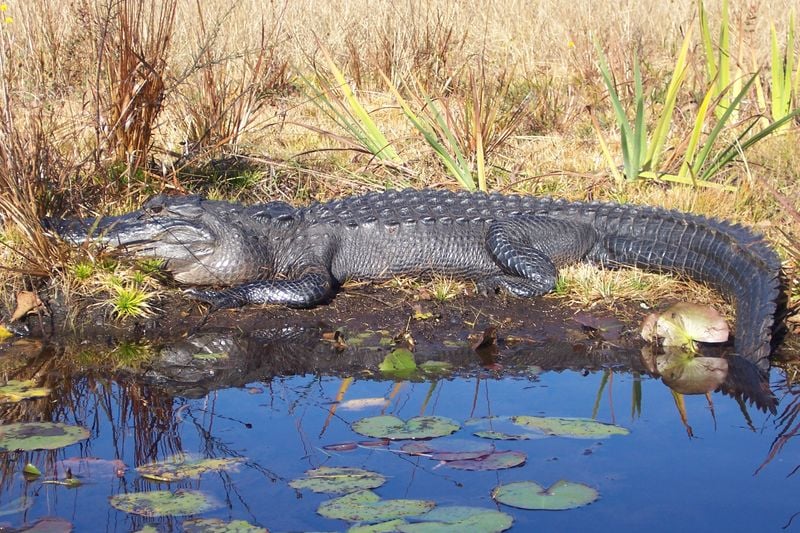
My first alligator sighting in the Okefenokee Swamp was unforgettable. This sprawling 438,000-acre wetland is not only a natural marvel, but also home to Georgia’s largest population of alligators—some measuring over 14 feet long.
Ancient cypress trees draped in Spanish moss provide an ideal setting for these prehistoric predators. The swamp’s tea-colored waters and labyrinthine waterways offer ideal hunting grounds and nesting sites.
Visitors can safely observe these magnificent reptiles from canoes, guided boat tours, or elevated boardwalks. Remember though – the Okefenokee isn’t a zoo, it’s their territory, and we’re just passing through.
2. Alligator Holes: Nature’s Engineering Marvel
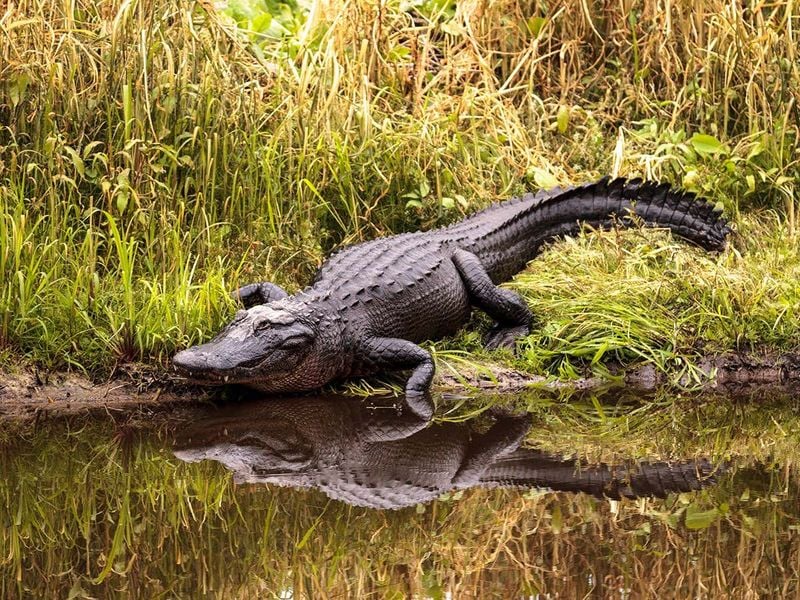
Ever noticed those circular depressions in Georgia’s wetlands? Alligators create these “gator holes” by using their powerful bodies to dig into mud and vegetation. These remarkable structures aren’t just homes—they’re essential ecosystem features!
During droughts, these holes retain water, becoming lifesaving oases for fish, turtles, and birds. I once watched a 10-foot gator patrol his hole with surprising gentleness around the smaller creatures sharing his space.
Female alligators build nearby nests from vegetation, creating mini-ecosystems. The decomposing plant matter generates heat that determines the gender of the babies—nature’s own incubator system!
3. The Fall Line Boundary: Nature’s Alligator Fence
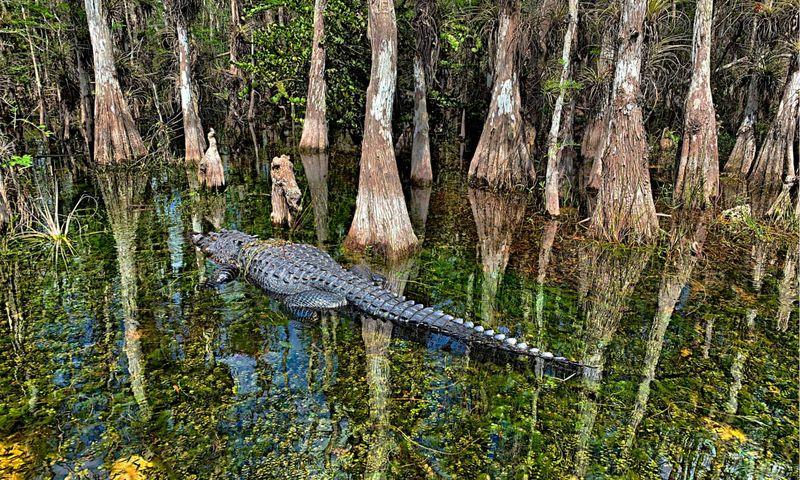
Georgia’s natural alligator border follows an invisible geological feature called the Fall Line. This diagonal line stretches from Columbus through Macon to Augusta, marking where the hilly Piedmont meets the flat Coastal Plain.
South of this line, alligators rule. The warmer temperatures and abundant wetlands create perfect gator real estate. North of the line? You’re generally safe from unexpected reptilian visitors.
Climate change has pushed some adventurous gators slightly northward in recent years. A friend who works as a wildlife officer told me they occasionally remove confused alligators from suburban areas just north of the traditional boundary.
4. Apex Predators Keeping Georgia’s Waters Balanced
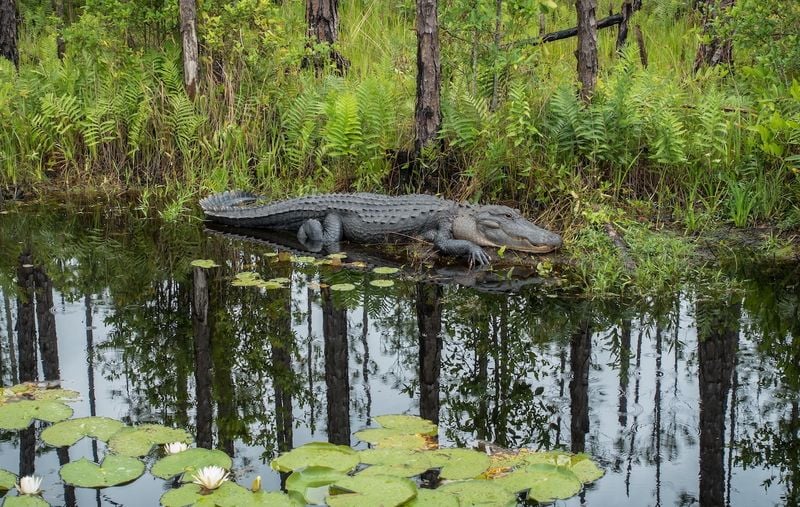
Alligators aren’t just scary swamp monsters—they’re critical ecosystem managers! As apex predators, these toothy reptiles control fish, turtle, and small mammal populations that would otherwise explode unchecked.
Their feeding habits prevent any single species from dominating Georgia’s waterways. Young alligators feast on insects and frogs, while adults tackle larger prey like nutria (invasive rodents) that damage wetland vegetation.
The relationship works both ways. When alligators decline in an area, the entire ecosystem suffers. During a wildlife survey at Lake Blackshear last summer, researchers documented how healthy alligator populations corresponded with greater overall species diversity.
5. Living Safely with Georgia’s Prehistoric Neighbors

Alligator attacks are extremely rare in Georgia, but why tempt fate? Never feed wild alligators—it teaches them to associate humans with food, a dangerous connection. Keep pets leashed near water bodies in southern Georgia, especially during dawn and dusk when gators actively hunt.
Swimming in the Altamaha River taught me respect for these ancient creatures. Stay alert in areas with posted alligator warnings and keep at least 30 feet away when spotting one.
Most importantly, appreciate these magnificent animals from a distance. They’ve survived since dinosaur times for good reason—they’re perfectly adapted to their environment and deserve our respect as Georgia’s ultimate wildlife success story.
